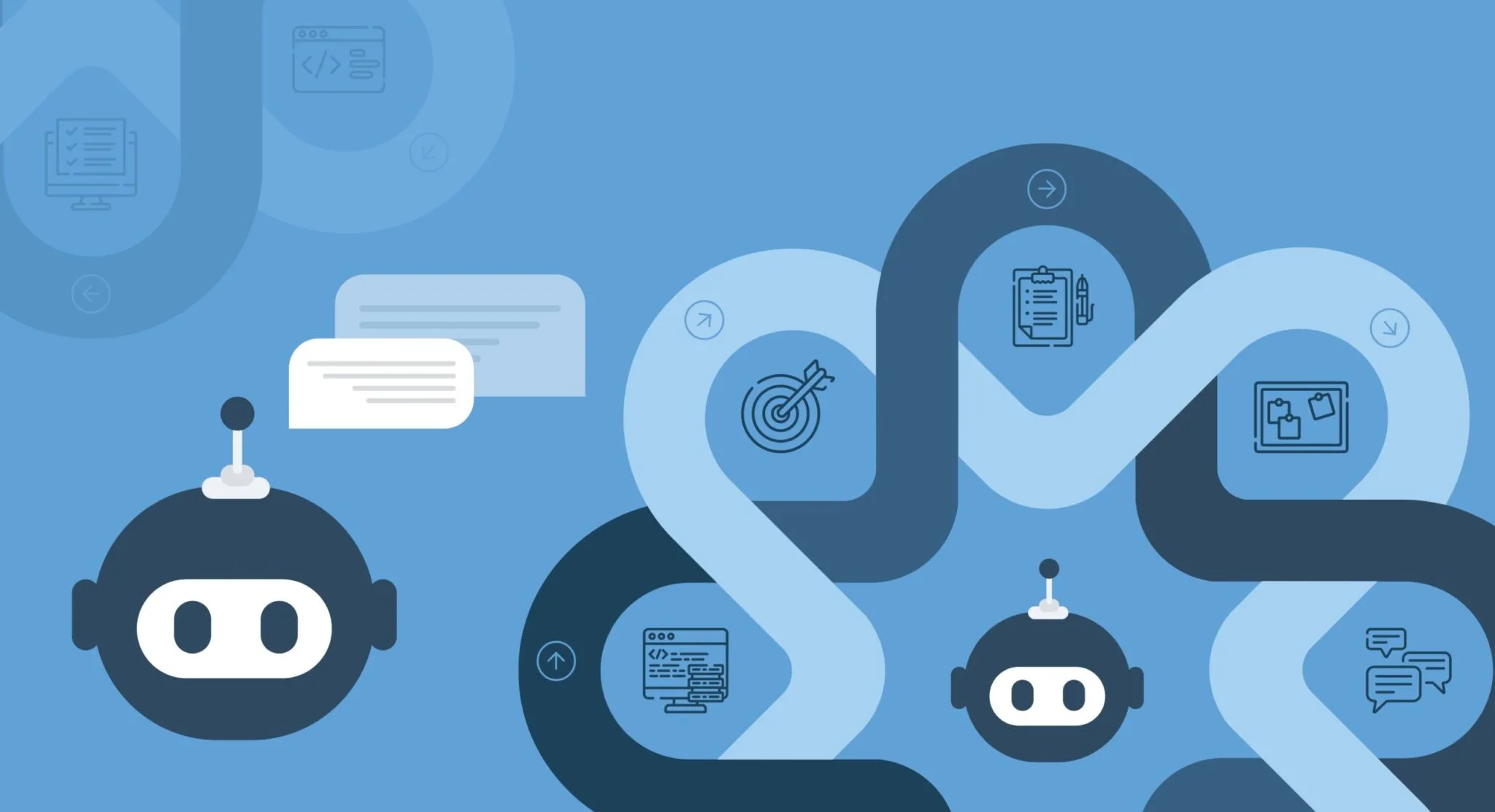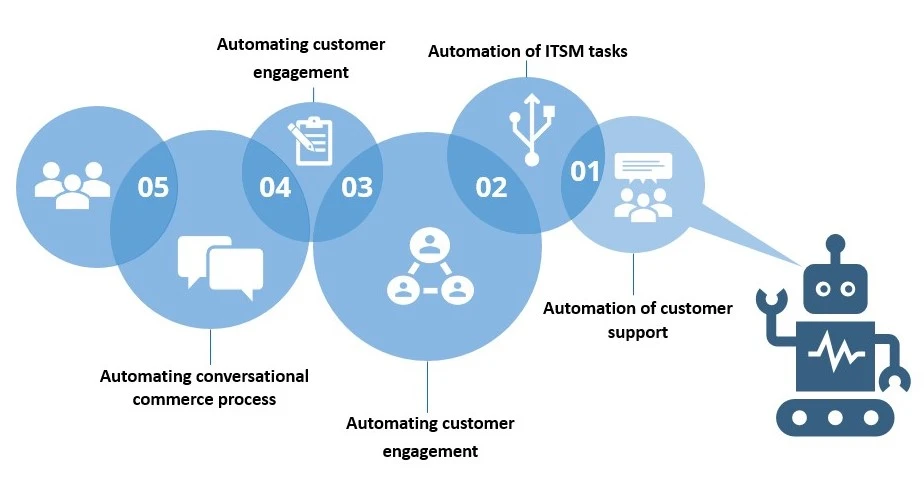Conversational AI: Secret Formula not a Secret Anymore

- September 29, 2021
- Priyanka Shah
- Conversational AI
“I see a natural progression from knobs and dials to clicks and taps, to swipes and gestures, to voice and emotion”, says Imran Chaudhry, the iPhone’s original UI designer.
The trend charts are now in the favour of Conversational AI and so we know that it’s time to give voice to our chats. We mean like it’s 2021 and still waiting for agents to answer your queries is quite old school. There’s no problem in staying old school, but these advancements in Conversational AI are, in the true sense, irresistible. But we are very curious to know the reason behind this hype and we are sure you’re too. So, let’s read along and get our answers.
Just like chatbots and Intelligent Virtual Assistances (IVAs), Conversational AI is a set of technologies that enables machines and chatbots to understand, process, and answer queries or chat in a super natural, humanized form. At the moment, Conversational AI has proved to be the best propeller across the spectrum of AI in marketing. More and more companies have now targeted these automated buddies and we can already call this the start of a revolution.
Key Components of Conversational AI
- Machine Learning
- Natural Language Processing
- Deep Learning
Let’s see how these key components contribute to Conversational AI and maybe we mind the formula to this automation wonder.
1. MACHINE LEARNING
Consisting of data entries, datasets, algorithms and varying features with continuous improvements and updates in them, Machine Learning (ML) can be defined as a sub field of Automation or Artificial Intelligence (AI). With user inputs and experience, these mentioned algorithms and features gets better and better and there is no going back. Betterment in Predictions and customer support is what is targeted and eventually can achieved over the years.
2. NATURAL LANGUAGE PROCESSING
The current method to analyse language along with machine learning is Natural language processing (NPL). The progress of Machine Learning can be traced back from linguistic processing to computational processing to statistical natural language processing. But the future holds space for deep learning and how it will contribute in the advancement of natural language processing capabilities of Conversational Artificial Intelligence.
NLP (Natural Language Processing) includes 4 steps:
- Input Generation
- Input Analysis
- Output Generation
- Reinforcement Learning
Input generation:
Any input from the users like their personal information on websites or for creating an account on any platform is considered under Input Generation. Input can either be voice or text.
When a user enters a question they want to ask, the process starts. This input could come from a text-based (like chatbots on websites, WhatsApp, Facebook, Viber, etc.) or voice-based (like voicebots and voice assistants) medium.
Input analysis:
The platform’s machine learning layer uses NLP and Natural Language Understanding to break the text into smaller pieces and extract meaning from the words after the user inputs their question. The voice note is first subjected to automatic speech recognition (ASR) in order to parse the sound into a language the machine can understand if the user is using voice AI to communicate with customer support. Find out more about the operation of voice AI here. Once the machine has text, AI (deep learning and neural network) in the decision engine analyses the content to determine the purpose of the query.
Dialogue management:
Here we discuss the automatic conversation that the chatbots will have with the users. Natural Language Generation (NLG), a component of NLP, helps formulate a response for user’s query, after the analysing step is done.
The AI will match the user’s query with a pertinent response now that it has comprehended the question. It will respond to the user using natural language generation (NLG). The AI consults integrated systems (the customer databases of the businesses) to review the user’s profile and prior conversations before producing the output. This adds a level of personalization to the response and aids in narrowing it down based on customer information. It’s likely that the AI won’t be able to match the intent with the database. In these circumstances, it gives an agent control of the conversation. Voicebots have an additional step here as well, similar to the Input Generation step. The AI’s reply is spoken after being converted from text.
Output Generation:
The application uses Dialog Management in this step to create a response based on intent. NLP’s natural language generation (NLG), which orchestrates and transforms the response into a human-understandable format, further organizes and transforms the response.
Reinforcement learning:
Machine learning algorithms refine responses over time to ensure accuracy and clarity.
This is where a conversational AI chatbot’s self-learning capabilities are useful. The AI is trained to improve its response in the subsequent interaction based on how well-received the answer was by the user. Businesses collect a wealth of data from each interaction full of variations in intent and language that is used to train the AI further. As time goes on, the user receives quicker and more precise responses, which enhances their interaction with the machine.
3. DEEP LEARNING
Deep Learning again targets learning from experience. Every new user is responsible for bettering the bot and ensuring more efficiency. At the time it’s also on AI Experts to keep chatbots and voice bots updated for finer performance.
Benefits of using Conversational AI Chatbot
Less handling time, higher output, and significantly improved customer service are a few benefits of conversational AI. Let’s look at some of the most important advantages of implementing conversational AI and how this innovation can support businesses in maintaining their competitiveness.
1. Automate tasks involving customer support and service
The ability to automate customer service and support is one of the main benefits of using conversational AI. In addition to providing information about products and services, tracking orders, and resolving technical issues, chatbots and virtual assistants can also respond to frequently asked questions. Because of this, businesses can provide customer service at all hours and improve the customer experience.
2. Personalize conversations at scale and increase user engagement
Conversational AI also has the ability to improve user engagement and provide customized experiences. By combining machine learning and natural language processing, conversational AI systems can understand the user’s context and intent and AI to provide tailored responses. The customer experience is enhanced and made more satisfying as a result.
Discover how conversational AI tools are transforming workplaces in Boost Employee Engagement with Conversational AI.
3. Collect insightful user behavior information
The ability to gather necessary data and insights into user behavior is another benefit of conversational AI. Companies can gain valuable insight into the needs, preferences, and problems of their customers by keeping an eye on user interactions and the conversational AI system. Effective marketing campaigns can be targeted using this information to improve products and services.
4. Reduced costs and response times for customer service
Conversational AI can reduce costs and increase effectiveness. Automating customer service and support tasks enables businesses to lower labour costs and boost productivity. Additionally, conversational AI systems can handle numerous customer interactions concurrently, allowing businesses to scale their operations and serve more customers.
5. Expand the window of opportunity for development and innovation
Using conversational AI can also create new opportunities for development and innovation. As AI technology advances further, will enable conversational AI applications and use cases that were not previously possible. This could lead to new business models, revenue streams, and expansion opportunities.
Conversational AI Use Cases

Uses of Conversational AI chatbots has a variety of potential commercial uses. Let’s examine some of the most innovative ways businesses are utilizing conversational AI to engage clients and improve processes.
Automation of customer support:
Using conversational AI, customer service tasks like answering frequently asked questions, resolving technical issues, and providing information about goods and services can be automated. This can help businesses provide customers with support around-the-clock and improve the overall customer experience.
Automating HR processes:
Automating HR processes with conversational AI enables the scheduling of interviews, answering employee questions, and providing information on benefits and policies. For time savings and enhanced employee satisfaction, HR departments can take this action.
Automating customer engagement:
By providing personalized experiences and interacting with customers whenever, wherever, across many channels, and in multiple languages, conversational AI can raise customer engagement.
Automation of ITSM tasks:
Conversational AI may also be used to automate IT service management tasks, such as resolving technical issues, providing information about IT services, and keeping track of the status of IT service requests.
Automation of conversational commerce processes:
Conversational AI makes it possible to automate processes related to conversational commerce, such as recommending products, answering queries from customers, and finishing transactions. In order to improve customer shopping experiences and increase sales, businesses may profit from this.
The right persona matters! Learn more in Crafting the Perfect Bot Persona.
This all sums up to:
CONVERSATIONAL AI = MACHINE LEARNING + NATURAL LANGUAGE PROCESSING + DEEP LEARNING
We have now shared this magical formula with you. But we don’t stop at this. Implementing this along with our expertise is what we are ready to share with you for automation updates for your company and businesses. Ready to embrace AI? Book a Call with our team today or mail us at coffee@kevit.io and get started!
See Kevit.io In Action
Automating business processes with Kevit.io is now just a click away!